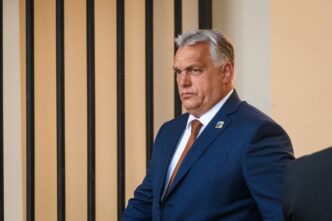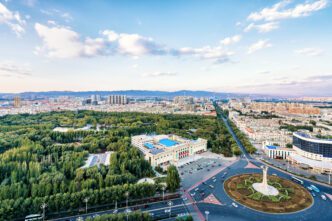The prospects for peace in Ukraine appeared more distant following a recent call between President Donald Trump and Russian President Vladimir Putin. Despite expectations that Trump’s personal influence could prompt Putin towards peace, the call underscored the challenges ahead in resolving the conflict.
The call, which had been anticipated as a pivotal moment, instead highlighted the complexities and uncertainties surrounding Trump’s involvement in peace efforts. It also exacerbated divisions between the United States and its European allies concerning strategies to end the war.
Ukraine, along with its European partners, has been advocating for a 30-day ceasefire to facilitate negotiations for a permanent peace agreement. However, Russia has refused this approach, demanding immediate talks on a final settlement. This stance is perceived as a tactic to continue Russia’s military offensives, which have been devastating to civilian populations.
Following his conversation with Putin, Trump announced that Ukraine and Russia would engage in direct talks, ostensibly to broker a ceasefire and ultimately conclude the war. This announcement was seen as aligning with Russia’s preferred approach, raising questions about the U.S. role in the peace process.
Moreover, Trump introduced ambiguity into the peace efforts by not dismissing the possibility of the U.S. withdrawing from the process if progress stalls. This stance echoes sentiments expressed by Vice President JD Vance about the U.S. potentially stepping back if negotiations falter.
The U.S. appears to be taking a less direct role in the negotiations, with Trump suggesting that other entities, such as the Vatican, could become involved. Many observers argue that effective peace negotiations require the U.S. to leverage its influence actively.
The details of the call between Trump and Putin remain largely undisclosed, with only selective information released by the Kremlin and the White House. Russian officials hinted at a positive atmosphere during the lengthy discussion, which did little to alleviate concerns about Trump’s approach to Putin.
Despite the anticipation that Trump’s call could mark a turning point in efforts to end the conflict, his administration has been reluctant to impose additional sanctions on Russia or increase military aid to Ukraine. Trump’s strategy seems to aim at maintaining dialogue without escalating tensions through sanctions, though critics argue this weakens the U.S. negotiating position.
Ukrainian President Volodymyr Zelensky, after his own discussions with Trump, underscored the importance of continued U.S. involvement in the peace process. He advocated for stronger sanctions against Russia if it persists in its aggression, and proposed that any negotiations include European and American representatives.
While Trump has expressed a desire to focus his presidency on peacemaking, the current state of affairs, with intensified conflicts in Ukraine and other regions, suggests a need for more substantive efforts. The situation in Ukraine, coupled with other international conflicts, underscores the challenges of achieving lasting peace through diplomatic efforts alone.
In summary, the recent call between President Trump and President Putin highlights the ongoing difficulties in resolving the war in Ukraine. With Russia’s demands perceived as untenable by Ukraine, and the U.S. hesitant to exert its full influence, the path to peace remains fraught with challenges.








